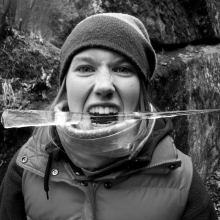
The month of June hosts many popular week-long calendar events such as Worldwide Knit in Public Week and National Watermelon Seed Spitting Week. Most importantly though, June means it is time to celebrate the flying creatures that provide us with beautiful and sweet smelling flowers and fruit all summer long during National Pollinators Week from June 16th-23rd.
Established in 2007, Pollinator Week has been gaining support from governors, mayors, and U.S. officials every year. Finally, in 2013, the Pollinator Week Proclamation was signed by Tom Vilsack, U.S. Secretary of Agriculture, and Sally Jewell, U.S. Secretary of Interior, kicking off the first ever national celebration of pollinators. This week is a time of commemoration for the bees, birds, butterflies, bats and beetles that work so hard to make sure that nature continues ticking like the finely tuned Swiss watch that it is.
Pollinators, mostly bees, play an important role in flowering and plant reproduction for fruits and vegetables such as, apples, squash, and almonds. Over 75% of all flowering plants are pollinated by animals. Without pollinators, these plants would not be able to produce the fruits, vegetables, and nuts (this includes CHOCOLATE and COFFEE) we find so tasty. However, we are not the only ones who can’t resist a delectable, ripe apple or a plump and juicy blackberry. Many frugivorous (fruit eating) animals rely on the summertime emergence of these fruits for sustenance.
For those of you who are a little foggy on how pollination works, here is a review. Pollination occurs when pollen from the male part (stamen) of the flower comes in contact with the female part (stigma) of the same or another flower resulting in fertilization. Fertilization then allows for a fruit, vegetable, or seed to form. Some plants use the power of the wind to pollinate and others require the help of animals to move pollen. Some pollinators do their job accidentally when they are searching for nest materials, mates, or food. They rustle the flower and incidentally knock some pollen onto the stigma. Many bees, on the other hand, deliberately collect pollen on their legs to bring back to the hive and consume as a food source. In this process, they don’t eat all the pollen as some grains are consequently left behind.
There are two important factors in this pollination equation that you must understand: time and abundance. Unfortunately, humans are messing with both. As a result, our pollinators and the fruits they enable are in real danger.
The abundance of pollinators directly affects the abundance of fruit and flowers that will be produced. Pollinators are considered to be in a state of decline, some even to the point of near extinction. This is mainly our doing. When we misuse pesticides, impose on pollinator migration with light and air pollution, and destroy pollinator habitat, we threaten the driving force behind our food system. With less habitat and fewer pollinators surviving seasonal migrations, populations are in decline and fruit abundance is bound to go down with it.
 Timing is also very important to pollination. The birds and the bees must be in the right place when plants are flowering in order to pollinate them. Pollinators and polinatees often rely on different climatic clues for when to become active in the springtime. Some pollinators emerge in response to air temperature while some plant flowers respond to snow melt.
Timing is also very important to pollination. The birds and the bees must be in the right place when plants are flowering in order to pollinate them. Pollinators and polinatees often rely on different climatic clues for when to become active in the springtime. Some pollinators emerge in response to air temperature while some plant flowers respond to snow melt.
Some scientists fear that the impacts of climate change will force plants and pollinators out of sync due to warmer winter temperatures. It is hard to say what climate change will do to migratory pollinators, such as humming birds, but the future does not seem bright. Researchers predict that climate change will uncouple the migration of pollinators with the blooming of the flowers they pollinate, resulting in fewer plants being pollinated every season.
This all seems pretty grim, doesn’t it? Well there is some good news. YOU can help bring back the pollinators in the North Country. As a farmer, you can add natural habitat to your farm. Farms that have more green space will attract more pollinators and thus produce more crops. If you are in an urban-ish area, make a garden in your backyard or ask for permission to make one in a nearby park. Pollinators don’t seem too phased by urban areas as long as they have a few plots of viable habitat to provide food and shelter. Also, in your gardens, make sure you are planting local plant varieties which are preferred by the local pollinators and will survive better in their local climate. Even without planting a garden you can help by spreading the word about the benefits of pollinators, supporting local farmers and beekeepers by buying local honey, or even donating to a pollinator organization of your choice to benefit research and protection of pollinators all over the world.


